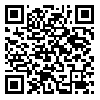Background & Aims: The aim of this prospective study was to assess the prevalence and distribution of hypodontia in the permanent dentition in a sample of Azerbaijan population (Iran) conferring to private and public clinics for orthodontic and dental treatment and to investigate the relationship of hypodontia with class I, II and III malocclusions in 2014.
Materials & Methods: Panoramic radiographs with clinical examination of 2480 patients (934 males (37.6%) and 1596 females (62.4%)) with chronological age between (10-20) years were used, and the patients were divided into three groups of malocclusions class I, II and III according to the profile, amount of overjet and molar relationship.
Results: The prevalence of hypodontia in the inspected population was 5.4% (5.2% for males and 5.3% for females). The average number of the congenitally missing teeth per patient was 2.02 (2.06 females and 1.96 for males). The most common congenitally missing teeth were upper lateral incisors (36.6%), mandibular second premolars (25%), central incisors (14.3%) and maxillary second premolars (11.8%) respectively. Hypodontia was more common in class I malocclusion than the other groups.
Conclusion: The prevalence of hypodontia in girls was higher than boys and in class I malocclusion was more prevalent than class II and III groups that these differences were not significant (p>0.05). The chance of symmetrical hypodontia was higher in class I malocclusion than other groups that was significant (p=0).
SOURCE: URMIA MED J 2016: 27(2): 122 ISSN: 1027-3727
| Rights and permissions | |
 |
This work is licensed under a Creative Commons Attribution-NonCommercial 4.0 International License. |


